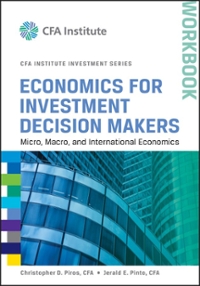tax

1. Acquiring Corporation ("P") has 500,000 shares of voting common stock outstanding (value-$10 per share) and $500,000 of accumulated earnings basis of $300,000 and an aggregate fair market value of $500,000, and and profits. Target Corporation ("T") has assets with an aggregate adjusted $100,000 of accumulated earnings and profits. Except as otherwise indicated PROBLEMS below, assume that Thas no liabilities. Ts ten equal shareholders each owed 100 shares of T voting common stock with an adjusted basis of $20,000 and a fair market value of $50,000. Discuss the tax consequences to P, T and T's shareholders of each of the following alternative transactions: (a) T merges into P in a qualified Type A reorganization. Each T shareholder receives 4,000 shares of P voting common stock (value-$40,000) and P nonvoting preferred stock (not "nonqualified preferred stock") worth $10,000. What if the P nonvoting preferred were nonqualified preferred stock? (b) Same as (a), above, but instead of the preferred stock each T shareholder receives 20-year market rate interest bearing P notes with a principal amount and fair market value of $10,000. (c) Same as (b), above, except that two of the shareholders receive all the notes (with a principal amount and fair market value of $100,000), and the remaining eight shareholders each receives P voting common stock worth $50,000. ONS 44 (d) Same as (b), above, except that T had $50,000 of accumulated earnings and profits. (e) Assume for the remainder of the problem that T has assets with an aggregate fair market value of $600,000, an aggregate adjusted basis of $300,000, and a $100,000 liability. Pacquires all T's assets in a qualified Type C reorganization in exchange for P voting stock worth $500,000 and P's assumption of T's $100,000 liability. T immediately distributes the P stock to its shareholders in complete liquidation. (1) Same as (e), above, except P transfers $500,000 of P voting stock and $100,000 cash to T, which uses the cash to pay off its liability and then distributes the stock to its shareholders in complete liquidation. (g) Same as (e), above, except P transfers to T $500,000 of P voting stock and investment securities with a basis of $40,000 and a fair market value of $100,000. T sells the securities for $100,000, using the proceeds to pay off its liability, and then liquidates and distributes the P stock to its shareholders. (h) Same as (e), above, except P transfers $600,000 of its voting stock to Tin exchange for all of T's assets and does not assume T's liability. T then sells $100,000 of P voting stock and uses the proceeds to pay off the liability. T then distributes the remaining P stock to its shareholders in complete liquidation. (i) Same as (h), above, except T transfers $100,000 of P voting stock directly to its creditor in payment of the liability and then distributes the remaining P stock to its shareholders in complete liquidation. ("P") creates Subsidiary Corporation ("S") by AN 1. Acquiring Corporation ("P") has 500,000 shares of voting common stock outstanding (value-$10 per share) and $500,000 of accumulated earnings basis of $300,000 and an aggregate fair market value of $500,000, and and profits. Target Corporation ("T") has assets with an aggregate adjusted $100,000 of accumulated earnings and profits. Except as otherwise indicated PROBLEMS below, assume that Thas no liabilities. Ts ten equal shareholders each owed 100 shares of T voting common stock with an adjusted basis of $20,000 and a fair market value of $50,000. Discuss the tax consequences to P, T and T's shareholders of each of the following alternative transactions: (a) T merges into P in a qualified Type A reorganization. Each T shareholder receives 4,000 shares of P voting common stock (value-$40,000) and P nonvoting preferred stock (not "nonqualified preferred stock") worth $10,000. What if the P nonvoting preferred were nonqualified preferred stock? (b) Same as (a), above, but instead of the preferred stock each T shareholder receives 20-year market rate interest bearing P notes with a principal amount and fair market value of $10,000. (c) Same as (b), above, except that two of the shareholders receive all the notes (with a principal amount and fair market value of $100,000), and the remaining eight shareholders each receives P voting common stock worth $50,000. ONS 44 (d) Same as (b), above, except that T had $50,000 of accumulated earnings and profits. (e) Assume for the remainder of the problem that T has assets with an aggregate fair market value of $600,000, an aggregate adjusted basis of $300,000, and a $100,000 liability. Pacquires all T's assets in a qualified Type C reorganization in exchange for P voting stock worth $500,000 and P's assumption of T's $100,000 liability. T immediately distributes the P stock to its shareholders in complete liquidation. (1) Same as (e), above, except P transfers $500,000 of P voting stock and $100,000 cash to T, which uses the cash to pay off its liability and then distributes the stock to its shareholders in complete liquidation. (g) Same as (e), above, except P transfers to T $500,000 of P voting stock and investment securities with a basis of $40,000 and a fair market value of $100,000. T sells the securities for $100,000, using the proceeds to pay off its liability, and then liquidates and distributes the P stock to its shareholders. (h) Same as (e), above, except P transfers $600,000 of its voting stock to Tin exchange for all of T's assets and does not assume T's liability. T then sells $100,000 of P voting stock and uses the proceeds to pay off the liability. T then distributes the remaining P stock to its shareholders in complete liquidation. (i) Same as (h), above, except T transfers $100,000 of P voting stock directly to its creditor in payment of the liability and then distributes the remaining P stock to its shareholders in complete liquidation. ("P") creates Subsidiary Corporation ("S") by AN









